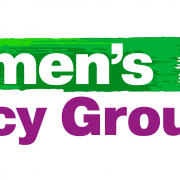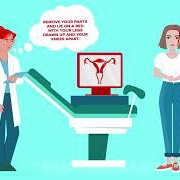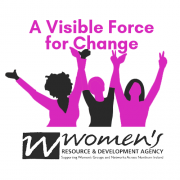In 2020, Northern Ireland has vast gender inequality across all aspects of society. Despite this, gender-neutral policy making is still the standard in all budgetary, policy and legislative decision making across Northern Ireland. It is essential that gender equality is embedded at the core of all levels of government and decision making across the public and private sectors of Northern Ireland.
This report will highlight the extent of gender inequality across several pillars which will reflect both the diversity and issues of women in Northern Ireland; including age, socio economic background, life experience, sexual orientation, disability, racial or ethnic background and political or religious belief.
- Economic Pillar:
Women’s Employment, Austerity, Poverty and the Gender Pay Gap
Women’s employment in Northern Ireland is characterised by gender segregated labour-markets, gender gaps in pay, higher levels of part-time work and a high concentration in low paying and precarious sectors such as caring, cleaning and the service/hospitality industry. The interruption of women’s employment for unpaid care work continues to significantly undermine women’s career progression and lifetime earnings, including pension provision.
Systemic issues often see women twice as dependent on social security as men with welfare reform and the wider austerity agenda having a disproportionate impact on women’s access to resources, security and safety.
- In employment, only 30% of women are self-employed. Women represent 82% of all part-time workers and 52% of women are unemployed[1].
- On average more than a fifth of complaints of discrimination received by the Equality Commission are about sex discrimination; of these 5% are to do with pregnancy or maternity[2].
- Having one or more children reduces women’s likelihood of being in a permanent full time job by almost one third, with only 45% of women with dependent children working in a permanent full time job. By the age of 42, mothers who are in full-time work earn 11% less than full-time women without children[3].
- Only 7% of disabled people are in employment and disabled women earn 1% less than able-bodied men, and 11.8% less than disabled men[4].
- Women are more likely than men to be forced out of the labour marked by unpaid, domestic work or caring responsibilities; 69% of carers in Northern Ireland are women.
- Women have 70% chance of providing care in their adult life; compared to 60% for men. By the time they are 46, half of all women have been a carer (11 years before men)[5].
- It is estimated that austerity since 2010 will have cost women a total of £79bn, against £13bn for men. It shows that, by 2020, men will have borne just 14% of the total burden of welfare cuts, compared with 86% for women[6].
- The group with the highest poverty throughout the last decade and worst impacted by welfare reform have been lone parents[7] in Northern Ireland; of which 91% are women[8].
- Hunger and foodbank use disproportionately impacts women, as women are twice as likely to be food insecure as men and single mothers are a third of all food bank users[9].
- Disabled single mothers are losing out the most from these tax and benefit changes since 2010. By 2021, they will have lost 21% of their net income if they do not have a disabled child and 32% if they do have a disabled child too. One third of this loss is due to a shift to Universal Credit[10].
- Northern Ireland is the only part of the UK without a government-funded Childcare Lone parents and families with a disabled child are less likely to be able to afford formal childcare and face further barriers to employment[11]
- Rural women suffer further due to the centralisation of services and access poverty; only 3% of government funding for women’s groups goes towards rural women[12].
- Social Justice Pillar:
Violence against Women, Education and Training
Despite startling statistics in Northern Ireland, domestic and sexual violence continue to be under-reported and prosecutions remain low and, as noted by CEDAW, Domestic Abuse Legislation remains inadequate.
- In 2018-19 the PSNI recorded 31,682 domestic abuse incidents, this increased 10% on the previous year and is the highest level in 15 years. There were 16,182 recorded domestic abuse crimes.
- On average the PSNI responded to a domestic abuse incident every 17 minutes, while domestic abuse accounted for 16% of all crime.
- In the same period the PSNI recorded 2,423 sexual offences and 1,023 reports of rape[13].
- Northern Ireland was identified as having the joint highest levels of femicide in Europe in 2017, with 8 women murdered in a homicide with a domestic motivation[14]. In 2018-19 the PSNI recorded 4 murders with a domestic motivation, all of those murdered were women.
In addition, the extent to which women feel prepared to participate in education and training depends on a number of factors including childcare, transport and cost. Women’s organisations offer community education which attempts to address these barriers particularly for women from disadvantaged and rural areas. Women need access to education and training to make the move from benefits to work, yet the Government are not supporting this. CEDAW has set out a number of recommendations to address gender inequality though education and training including:
- Strengthen efforts to encourage girls to pursue non-traditional subjects and take coordinated measures to encourage girls to take up courses in STEM subjects;
- Continue to implement the recommendations of the Women and Equalities Committee contained in the report of October 2018 on sexual harassment of women and girls in public places;
- Take measures to introduce mandatory age-appropriate education on sexual and reproductive rights in school curricula, including issues such as gender relations and responsible sexual behaviour, throughout the UK;
- Promote human rights education in schools which includes a focus on the empowerment of girls and the Convention.
- Cultural Pillar:
Politics, Public Life, Peacebuilding and Decision-Making
The Good Friday/Belfast Agreement committed to increasing women’s representation in public and political life, yet women remain under-represented in all spheres of political life, at Westminster, in the Stormont Assembly and in local government, as well as in public life, peacebuilding and economic decision-making. In almost every aspect of society, women are underrepresented in positions of power and decision making and overrepresented in low-paying and part time work. Even in sectors where women are the majority of the workforce, such as Teaching or the Health and Social Care sector, men still dominate the senior positions within these professions.
- In NI politics, women represent 37% of Lord Mayors, 26% of Local Councillors, 33% of MLAs and just 22% of MPs[15].
- In Public Appointments, women represent 28% of Chairs and 42% of all Public Appointments[16].
- Women represent 0% of Lord Chief Justice and Lord Justices of Appeal, just 25% of High Court Judges and 33% of County Court Judges[17].
- In the PSNI, zero women hold the position of Chief or Deputy Chief Constable and only 20% are Assistant Chief Constables. Women represent 30% of police officers and 58% of all PSNI staff[18].
- In the Civil Service, women represent 33% of Permanent Secretaries; 38% of Senior Civil Servants and 50% of the total NICS workforce[19].
- In the Education Sector, women represent 27% of University Chancellors or Pro/Deputy Vice Chancellors, 29% of FE College Principals and 60% of School Principals; despite 77% of all teachers being women[20].
- In the Health and Social Care Sector, women make up 79% of all staff but just 20% of Trust Chairs and 20% of Trust CEOs[21].
- In Local Government, women are 42% of all employees but just 27% of Council CEOs[22].
- Equality Pillar:
Rights at Risk and Rights in Sight
Many of the rights women enjoy today are derived from our membership of the EU over the past four decades; particularly in areas of economic activity and employment law[23]. Given the statistics outlined above, it is necessary that these hard-fought rights currently at risk are protected and enhanced. Some of the rights achieved through EU membership include equality between men and women[24], the right to equal pay for equal work[25], protection against discrimination on the ground of pregnancy and maternity[26], creating measures to provide specific advantages to the underrepresented gender[27], prohibition of discriminations on the grounds of sex[28] and the introduction of paid holidays[29]. Worryingly, no guarantees have been made to protect, or enhance, these rights. Further rights at risk include:
- The removal of the EU Charter of Fundamental Rights from all applications in UK law and judiciary systems. Whilst the UK government would still be required to abide by the European Convention of Human Rights (ECHR), the removal of the EU Charter is deeply worrying as it has a much broader level of protection for human rights[30].
- Existing EU case law through the Court of Justice of the European Union can now be overturned in future cases in UK courts and a department from current jurisprudence may lead to a divergence on human rights standards on either side of the border in NI.
- The EU human rights framework is much more robust than the UK Human Rights Act, however, the removal of both the Human Rights Act and the EU Charter will make it much more difficult for people to access their rights through the courts, as the ECHR is nowhere near as broad or strong as a standalone human rights framework.
When looking through the context of the recently reformed Northern Ireland Assembly, there are several commitments in the ‘New Decade, New Approach[31]’ (NDNA) deal that relate to women’s rights. These include commitments to deliver equality-based strategies on childcare; anti-poverty; gender; disability; sexual orientation and more. Further commitments have been made to address the Gillen Review[32], to increase funded cycles of IVF treatment, and to extend Welfare Reform mitigations beyond March 2020. However, the NDNA deal does not mention women or many of the issues outlined above. Further rights that need to be addressed through the Northern Ireland Assembly include:
- Domestic violence and coercive control legislation that is fit for purpose;
- Tackling gender pay gaps and discrimination;
- Scrapping the Universal Credit Two-Child Limit;
- Addressing the historic underinvestment in rural women;
- Rectifying the under-representation of women in politics, public life and decision-making;
- Tackling the rise of misogyny as a hate crime, particularly towards trans women, BME women and disabled women;
- Standardising RSE and tackling rape culture;
- Fully supporting and financing perinatal mental health services and much more.
Conclusion:
The statistics presented verify that gender inequality is prevalent in all aspects of society in Northern Ireland; including the public and private sectors. To address the structural barriers that women face, gender equality needs to be embedded at the core of all policy, legislative and budgetary decision making. Despite existing legislation banning discrimination against women, and recommendations from international bodies such as CEDAW to address such issues, wide-spread discrimination and structurally supported barriers still exist for women. With all factors considered, it is necessary to not only protect existing human rights protections for women, but to enhance them and totally reform decision-making and power structures in Northern Ireland. For decades, legislation in Northern Ireland has not been considered through a gender budgeting lens and women have suffered disproportionately as a result. Further gaps in legislation, alongside inadequate funding provisions and absent, insufficient or outdated strategies, have negatively impacted the lives of women in Northern Ireland. The women of Northern Ireland have created a roadmap on how to address these issues here.
Written by Rachel Powell, Women’s Sector Lobbyist – WRDA – rachel.powell@wrda.net
[1] From Northern Ireland Statistics and Research Agency (2018), Women in Northern Ireland 2018: https://www.nisra.gov.uk/news/women-northern-ireland-2018.
[2] Equality Commission Northern Ireland, (2019), ‘Pregnancy and maternity discrimination remains an issue for working mothers’, https://www.equalityni.org/Blog/Articles/August-2019/Pregnancy-and-maternity-discrimination-remains-an
[3] TUC, (2016), ‘The Motherhood Pay Penalty’, https://www.tuc.org.uk/sites/default/files/MotherhoodPayPenalty.pdf
[4] UK Women’s Budget Group, (2018), ‘Disabled Women and Austerity’, https://wbg.org.uk/wp-content/uploads/2018/10/Disabled-women-October-2018-w-cover-2.pdf
[5] Carers UK (2019), ‘Will I care? The likelihood of being a carer in adult life’: http://www.carersuk.org/images/News__campaigns/CarersRightsDay_Nov19_FINAL.pdf
[6] Keen, R., Cracknell, R. (2017), ‘Estimating the gender impact of tax and benefit changes’, Commons
Briefing Papers SN06758, http://researchbriefings.files.parliament.uk/documents/SN06758/SN06758.pdf
[7] UK Women’s Budget Group, (2016), ‘A cumulative gender impact assessment of ten years of austerity policies’,https://wbg.org.uk/wpcontent/uploads/2016/11/De_HenauReed_WBG_GIAtaxben_briefing_2016_03_06.pdf
[8] Women’s Regional Consortium, (2019), ‘Impact of Ongoing Austerity: Women’s Perspectives’, http://www.womensregionalconsortiumni.org.uk/sites/default/files/Impact%20of%20Ongoing%20Austerity%20Women%27s%20Perspectives.pdf
[9] Sheffield Political Economy Research Institute (2018), ‘Types of Families Most Likely to Need a Foodbank’, https://www.sheffield.ac.uk/news/nr/speri-foodbanks-trussell-trust-1.771247
[10] UK Women’s Budget Group, (2018), ‘Disabled Women and Austerity’, https://wbg.org.uk/wp-content/uploads/2018/10/Disabled-women-October-2018-w-cover-2.pdf
[11] Employers for Childcare, (2019), ‘Northern Ireland Childcare Survey 2019’, https://www.employersforchildcare.org/app/uploads/2019/06/Northern-Ireland-Childcare-Survey-2019-FINAL.pdf
[12] Women’s Policy Group NI, (2019), ‘Women’s Manifesto: General Election 2019’, http://www.womensregionalconsortiumni.org.uk/sites/default/files/Women%27sManifesto2019.pdf
[13] PSNI, (2019), ‘Domestic Abuse Incidents’, https://www.psni.police.uk/inside-psni/Statistics/domestic-abuse-statistics/
[14] BBC, (2019), ‘Femicide: The murders giving Europe a wake up call’ https://www.bbc.com/news/world-europe-49586759
[15] NI Assembly Research and Information Service, (2020), ‘Who Runs Northern Ireland? A Summary of Statistics Relating to Gender and Power in 2020’, http://www.niassembly.gov.uk/globalassets/documents/raise/publications/2017-2022/2020/assembly_exec_review/0120.pdf
[16] Figures as of 31 March 2017, Executive Office (2018), Public Appointments: Annual Report for Northern Ireland, 2016/17: https://www.executiveoffice-ni.gov.uk/publications/public-appointments-annual-report-201617.
[17] Figures as at 9 January 2020, ‘Judiciary of Northern Ireland’, Judiciary NI: https://judiciaryni.uk/about-judiciary/judicialmembers.
[18] PSNI, (2020), ‘Workforce Composition Figures’ and ‘Our Leadership’ pages: https://www.psni.police.uk/inside-psni/Statistics/workforce-composition-statistics/ and https://www.psni.police.uk/insidepsni/our-leadership/.
[19] Department of Finance (2019), Equality Statistics for the Northern Ireland Civil Service: https://www.nisra.gov.uk/publications/equality-statistics-northern-ireland-civil-service-2019
[20] Department of Education (2018), Teacher Workforce Statistics in Grant-Aided Schools in Northern Ireland 2017/18: https://www.education-ni.gov.uk/publications/teacher-workforce-statistics-201718;
[21] Northern Ireland health and social care Workforce Census March 2019: https://www.health-ni.gov.uk/news/ni-health-and-socialcare-workforce-census-march-2019
[22] NI Assembly Research and Information Service, (2020), ‘Who Runs Northern Ireland? A Summary of Statistics Relating to Gender and Power in 2020’, http://www.niassembly.gov.uk/globalassets/documents/raise/publications/2017-2022/2020/assembly_exec_review/0120.pdf
[23] WRDA (2019), ‘Brexit and the Impact on Women in Northern Ireland’, https://wrda.net/2019/10/18/brexit-and-the-impact-on-women-in-northern-ireland/
[24] The EU Charter of Fundamental Rights
[25] Article 119 Treaty establishing the European Economic Community
[26] ibid2
[27] Ibid24
[28] Ibid 24 (Article 21)
[29] According to the NIRWN, Rural Voices Report (2018, p.30): ‘Many of the two million workers who had no paid holiday before the Working Time Directive, were part-time working women’: https://www.nirwn.org/wp-content/uploads/2018/03/NIRWN-Rural-Voices-Research-Report-March-2018.pdf
[30] Human Rights Consortium (2018), ‘Rights at Risk Report’, http://www.humanrightsconsortium.org/rights-risk-brexit-process/
[31] NIA (2020), ‘New Decade, New Approach’, https://static.rasset.ie/documents/news/2020/01/new-decade-new-approach.pdf
[32] Gillen. J. (2019), ‘Gillen Review Recommendations’, https://www.justice-ni.gov.uk/sites/default/files/publications/justice/gillen-report-recommendations.pdf









